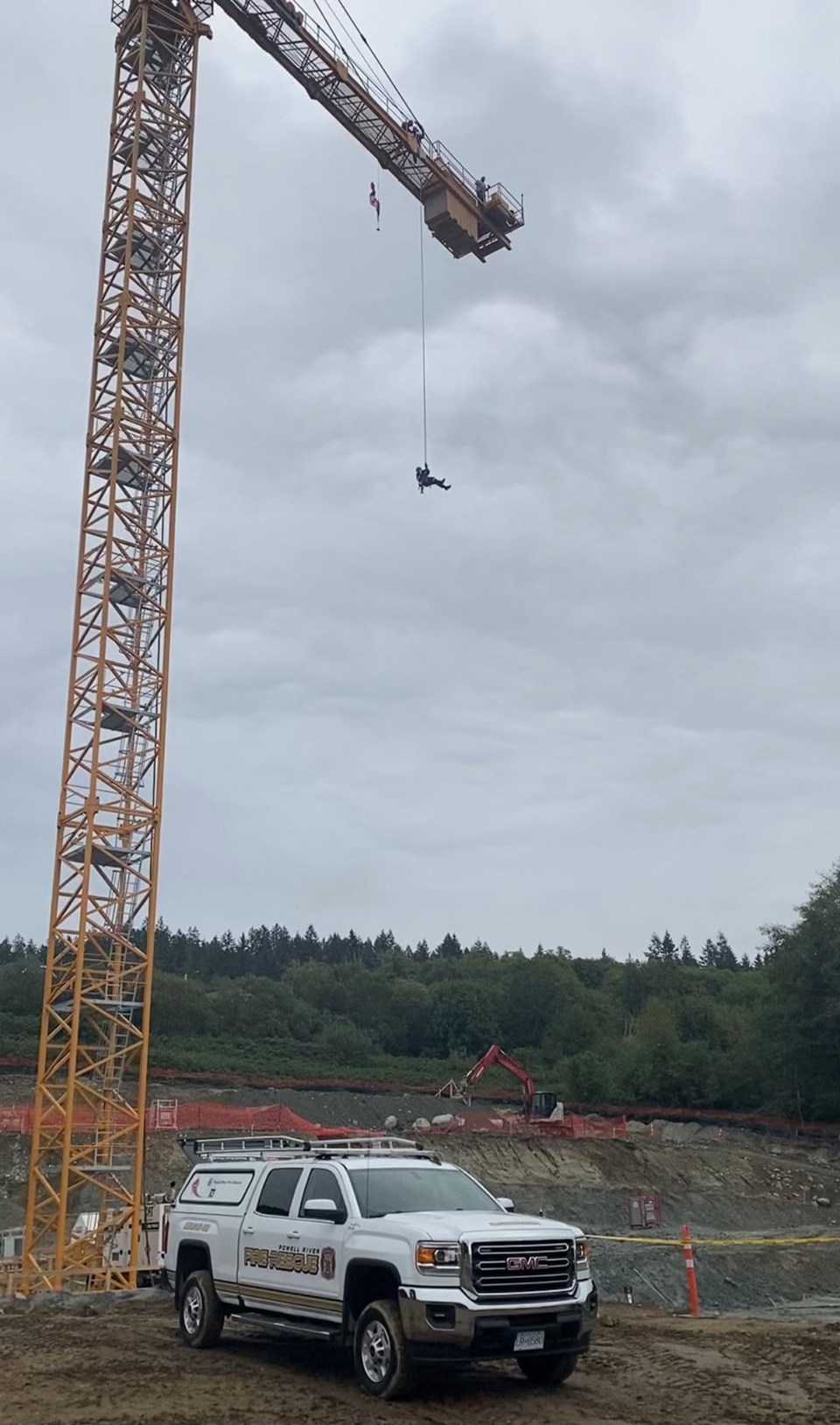Powell River firefighters having been dangling from rope high above the ground at the consolidated wastewater treatment plant’s tower crane in Townsite.
Deputy fire chief Rocky Swanson said Powell River Fire Rescue staff have been simulating rescues from atop the recently installed tower as part of their technical high-angle rope-rescue program (THARRP).
“The Province of BC has a program called THAARP that is basically to help out industry,” said Swanson. “Any time there’s one of these tower cranes installed, the company operating it must provide an initial emergency response of their own, such as first aiders on scene. The reality is most of the first responders at the scene are first aiders and they do their best, but the THARRP skills are incredibly difficult to maintain unless you practice frequently.
“WorkSafeBC regulations are such that companies must have a backup, which generally falls on a local fire department or a local rescue team of some kind. In Powell River we are that service. We are qualified rope-rescue technicians for high angle.”
Swanson said in the community, it’s not often that there are immense cranes erected. He said with the crane being installed, it’s important for firefighters to practice the strategy.
“What it entails is getting your crews up the crane if it’s safe to do so, and then being able to pull the operator out of the crane cockpit,” he added. “That is a difficult part because it’s an incredibly confined space.”
Swanson said operators are not required to wear a harness on the job, so one of the tasks is to get a harness on the operator within the confined space. He said once that happens, rigging has to be set up above the hatch to pull them out and swing them out onto the platform.
“Then we set up more rigging to put them over the edge and lower them to the ground,” said Swanson. “You can’t get anything wrong. You must be absolutely perfect in your skillset. That’s exactly why our guys are there.”
Swanson said if the medical situation allows for it, they will lower the crane operator down by themselves. That’s what the fire department practices first. He said the fire department had another practice session organized where they will be putting a patient in a basket for the simulation with a rescuer going down simultaneously.
“There’s a lot more work for that simulation,” said Swanson. “It’s a matter of getting our crews familiar with all of the tie-off points and the details of all of the knots and rigging they have to set up. It’s very, very precise.
“It’s probably the most skill-set-heavy action we can take as a fire department. There is no room for error.”
Swanson said the company asked the fire department to go to the crane and be the backup in case of emergency.
“The fire department was also asked to prove they could do it,” said Swanson. “We’re very confident that we can deal with this kind of thing.”
Swanson said the fire department has a couple of permanent towers in the qathet region it can use to train. One is at Stillwater and the other is at Block Bay on Powell Lake. The department has also trained high-angle rope rescue at the Powell River dam.
Swanson said each year, the fire department has to do a survey of the sites and can undertake similar exercises in those locations to keep its training current.




